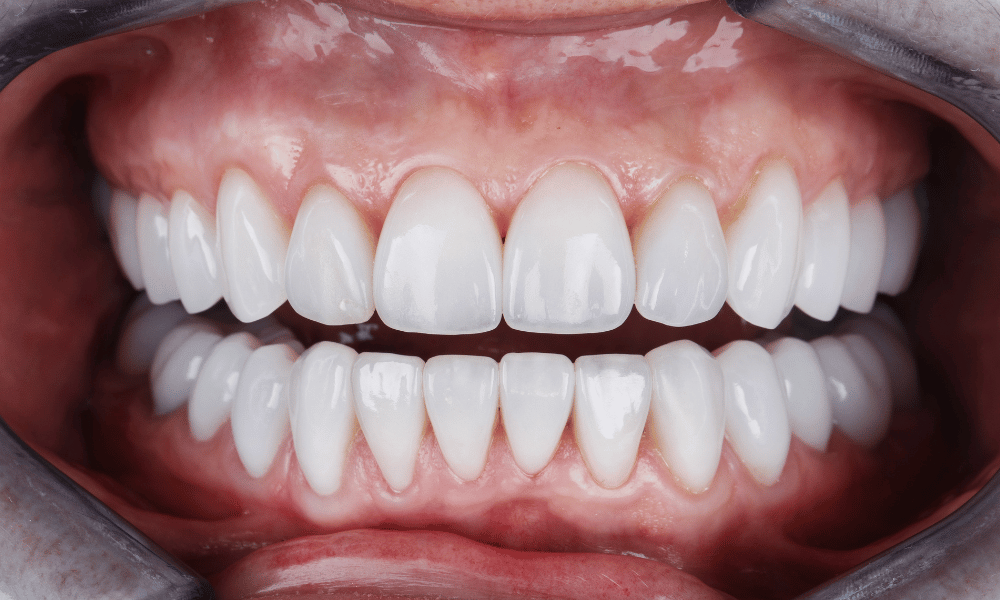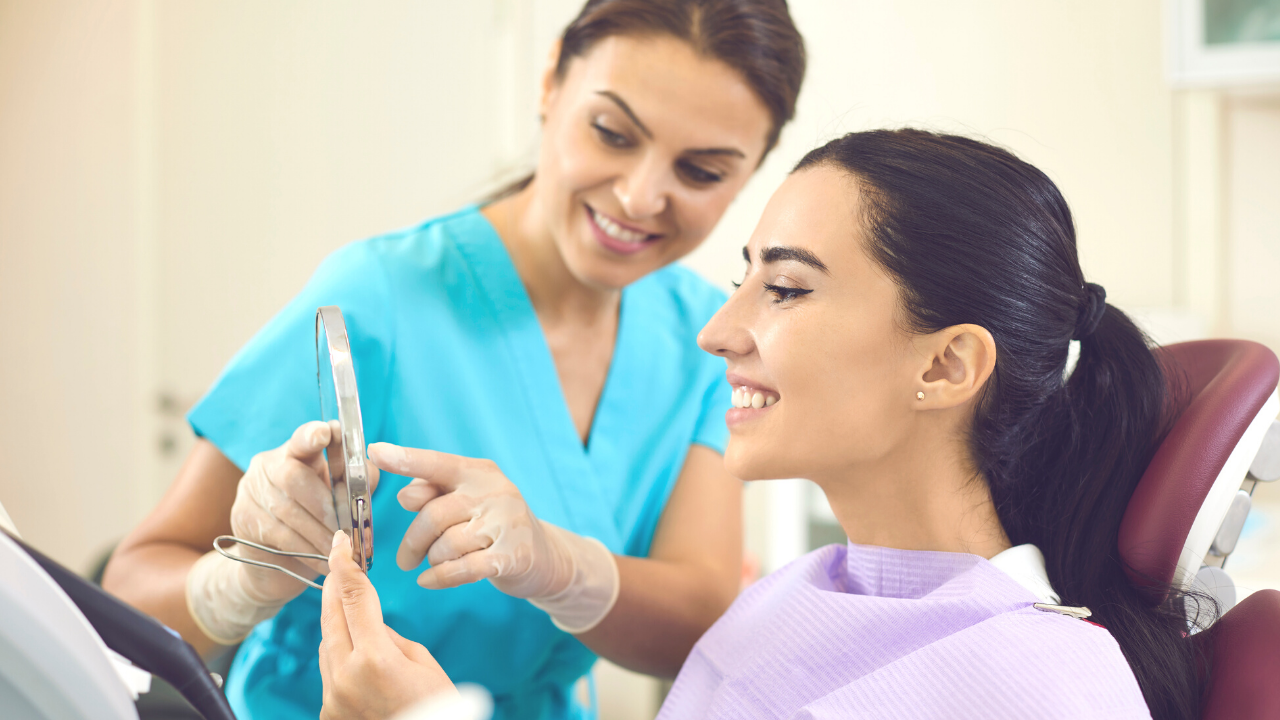January 30, 2025
.png)

Written by:
Dylan Schubert
Choosing the best material for dental restorations is not always so straightforward. Comparing IPS e.max crowns vs. zirconia crowns, they offer versatile, reliable, and realistic restoration options. These two of the most popular crowns come with their own benefits, making it difficult to decide between them.
The differences between e.max vs. zirconia are due to the materials they are made from, which affect their strength and functionality. Understanding the advantages and drawbacks of each material allows you to make the best decision for your patient.
IPS e.max crowns, made from a glass ceramic called lithium disilicate, have been available since 2006. Due to their versatility for dental restorations, including anterior and posterior crowns, veneers, inlays, onlays, three-unit anterior bridges, and more, they have become one of the most popular options.
In addition to lithium disilicate, IPS e.max material includes quartz, lithium dioxide, phosphor oxide, and potassium oxide. These crowns are an excellent alternative to metal or PFM restorations.
E.max crowns provide impressive aesthetic results, demonstrating the ability to replicate the natural tooth structure. The IPS e.max lithium disilicate material has a natural opalescence and translucency in each crown, making restorations nearly undetectable and giving patients more confidence in their smiles.
Zirconia crowns, or zirconium oxide, are another strong, durable, and functional alternative to metal crowns, which wasn’t widely used in dentistry until around 2011. They are monolithic ceramics made without additional materials or metals.
When selecting zirconia crowns, there are multiple options. The two most common types are monolithic zirconia crowns and layered zirconia. At PRO-Craft Dental Laboratory, we offer All-Z monolithic solid crowns and PRO-Z Full Layered Zirconia crowns with feldspathic ceramic overlay.
Depending on how the crowns are manufactured, you can attain a look that is surprisingly close to real teeth, with translucence and fluorescence that mimic natural teeth. Hand polishing the zirconia crowns twice helps create a smooth, natural surface, reducing the risk of wear on other teeth and minimizing plaque accumulation. This is why all PRO-Craft Dental Laboratory crowns go through the hand pumicing and polishing process.
IPS e.max and zirconia restorations have advantages and are superior to commonplace PFM restorations. Still, deciding which option is best for your patient can be challenging, so how do they measure against each other?
When weighing the differences between e.max vs. zirconia, you should consider the following factors.
| Category | Zirconia Crowns | IPS e.max Crowns |
| Strength and Longevity | Higher flexural strength, ideal for posterior teeth and bruxism patients. | Lower flexural strength compared to zirconia. |
| Appearance | Improved aesthetics with advanced staining and polishing techniques. | Excellent light diffusion for a highly realistic appearance. |
| Crown Preparation | Requires lower reduction levels. | Requires more tooth reduction. |
| Price | Generally more affordable. | Typically, it is more expensive, depending on placement in the mouth. |
Flexural strength measures a dental crown's strength and durability by showing how much force or pressure a material can withstand before it breaks. The higher the flexural strength, the better its resistance.
Chewing and biting require considerable force, and you want a crown that can handle the full functionality of your regular teeth. At PRO-Craft Dental Laboratory, our IPS e.max crowns feature a flexural strength of 500 MPa, while our All-Z solid monolithic zirconia crowns have a flexural strength of 1000 MPa. The higher strength of zirconia is especially beneficial for posterior teeth and patients with a high risk for bruxism.
Although zirconia maintains a higher flexural strength than IPS e.max, both options are long-lasting and demonstrate high survival rates in clinical trials. Over five years, one clinical trial showed a 94.22% survival rate for IPS e.max products, while another study found a 98% survival rate for zirconia crowns.
An appearance mimicking the coloration and texture of a real tooth is vital for increasing patient confidence and self-esteem. IPS e.max crowns are highly regarded for their ability to mimic real teeth. The lithium disilicate material has strong light diffusion properties, making the crowns appear more realistic and a favorable choice for anterior teeth.
However, zirconia crowns are not far behind in dental aesthetics. Although the original zirconia crowns were less realistic than lithium disilicate, advanced staining, and polishing techniques have improved their ability to meet patient desires for coloration and appearance. All-Z Plus High Translucency Crowns also generate more light diffusion and natural coloration.
Every lab is different, so results may vary on the crown’s appearance. At PRO-Craft Dental Laboratory, we dedicate our proprietary tinting and shading process to designing the most realistic, natural-looking teeth, providing more patient confidence.
Both types of crowns are highly versatile and fit for various applications, including crowns, veneers, and multi-unit bridges. Still, when comparing e. max vs. zirconia for restoration preparation, you must consider the requirements that are the best for your patient’s case.
All-Z monolithic zirconia crowns require a minimum reduction of 0.7 mm, but a 1.25 mm reduction is ideal. Avoiding undercuts and sharp incisal or occlusal edges is vital in zirconia crown restorations. Meanwhile, a lithium disilicate crown requires a minimum of 1.0 mm reduction. However, a three-unit bridge may need a 1.5 mm to 2.0 mm occlusal reduction and a 1.5 mm axial reduction.
IPS e.max and zirconia crowns are more biocompatible than PFM and friendly to patients with metal allergies. This aspect of both crowns alleviates some of the general concerns that come with preparation. At PRO-Craft, we utilize our custom library for natural tooth morphology to further simplify preparation.
Of course, price is a key factor in any procedure, and there is a significant difference between IPS e.max vs. zirconia. Generally, IPS e.max crowns range from $110 to $220, depending on whether they are for posterior or anterior positions.
Meanwhile, zirconia crowns are usually between $100 and $120. PRO-Z Full Layered Zirconia crowns are are pricier at around $200 because they are slightly stronger and boast a more natural appearance.
The best choice between e. Max vs. zirconia crowns ultimately depend on your patient’s case, but both are reliable options. Whatever your preference, PRO-Craft Dental Laboratory can provide you with a secure, long-lasting restoration that will leave your patient excited about the results. We offer both IPS e.max and zirconia crowns to assist you in meeting your patient’s individualized needs.
At PRO-Craft Dental Laboratory, we meticulously fabricate all our products, including hand pumicing and polishing all restorations, using our custom library for natural tooth morphology. Our thorough processes ensure every patient receives a tooth that maximizes appearance and functionality. Contact us today to learn more about our unique process or explore restoration options.

Creating beautiful anterior crowns is a challenging art. With their high visibility, anterior crowns can directly impact your patient’s confidence and smile. If you want happy patients, you need to...
Read More
Zirconia has revolutionized the dental industry with its versatility and robustness. It is renowned for its strength, making it a material of choice for dental restorations. Moreover, zirconia is...
Read More.png)
Restoring patients with insufficient bone volume is one of the most challenging areas of implant dentistry. Fortunately, today’s technology makes placing dental implants with limited bone not only...
Read More